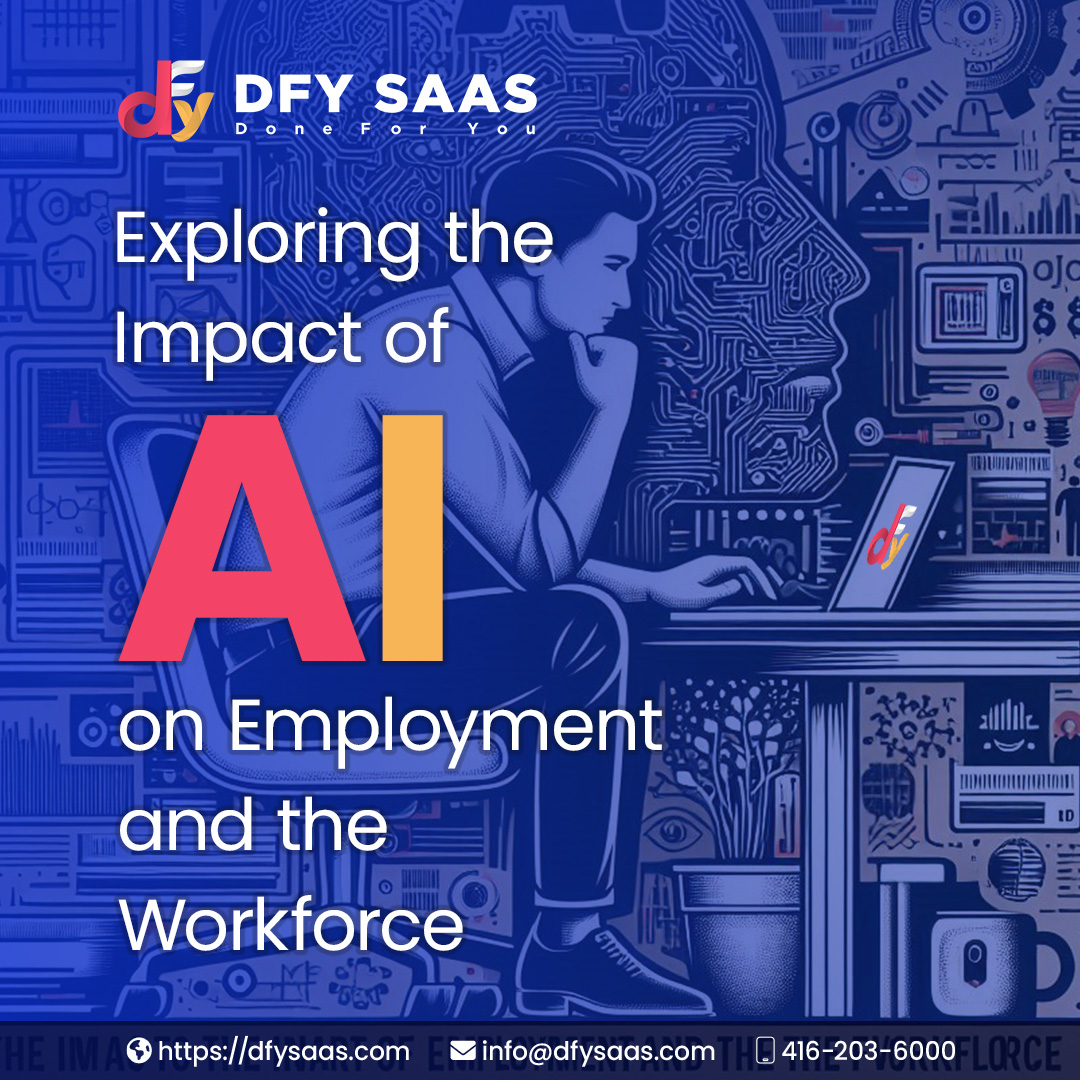

Artificial Intelligence (AI) is driving us towards a new era of technological innovation with profound implications for the global workforce. According to Goldman Sachs Research, generative AI could potentially raise global GDP by an impressive 7%. It might also enhance productivity by 1.5 percentage points over the next decade. These figures highlight AI’s transformative potential as it integrates into various business sectors and societal functions.
Generative AI represents a significant advance, blending advanced machine learning with extensive data analytics capabilities. This technology allows AI to perform tasks traditionally thought to require human intelligence. These tasks include generating written content, optimizing business processes, and making complex decisions. The potential for AI to boost efficiency and open new revenue avenues is substantial. However, its capacity to disrupt job markets and employment patterns is equally significant.
As we explore AI’s dual ability to generate economic growth and reshape employment structures, understanding both positive and negative impact of Artificial Intelligence is crucial. Stakeholders can better prepare for the forthcoming changes by examining these effects. This preparation ensures that AI contributes to a balanced and equitable economic future.
The rise of AI brings considerable risks, particularly in job security. Economists from Goldman Sachs estimate that AI could automate roughly 300 million full-time jobs globally. In the U.S. alone, around two-thirds of occupations are at some risk, which could lead to significant workforce displacement.
Jobs that involve repetitive tasks are particularly at risk. This shift towards automation could exacerbate income disparities and diminish the number of middle-class jobs, mirroring the decline seen in manufacturing employment over the past decades. Such developments could deepen economic inequalities and challenge social stability.
Despite the concerns, AI notably excels in boosting economic and productivity growth, providing a significant advantage. For instance, AI’s application in natural language processing is streamlining workflows across various sectors. This technological advancement not only increases the efficiency of knowledge workers but also accelerates processes like drug development and software coding. By automating routine tasks, AI is paving the way for new high-value roles in technology-driven fields.
Furthermore, generative AI is sparking innovation within the enterprise software industry. Software-as-a-Service (SaaS) companies are utilizing AI to enhance their product offerings and improve customer engagement strategies. Goldman Sachs Research estimates the potential market for AI software at $150 billion, highlighting the vast growth prospects for firms that integrate AI technologies into their operations.
The creation of new job categories following technological advancements has been a consistent trend. With the introduction of information technology, new roles such as web designers, software developers, and digital marketers have emerged. These roles, in turn, have spurred growth in related services sectors such as healthcare, education, and hospitality by boosting overall demand.
Looking forward, the impact of Artificial Intelligence on employment could unfold along two potential paths: one leading to greater automation and the other focusing on augmenting human capabilities. The direction taken will largely depend on decisions made by those in leadership positions within the tech industry and government.
To mitigate the adverse effects of automation, it is crucial to promote AI applications that enhance rather than replace human capabilities. Supporting the development of AI that complements human efforts could result in new job types and sectors, providing fresh opportunities for economic participation.
For AI to be a force for good in the employment sector, significant efforts are needed in several key areas:
Preparing the workforce for the future is essential. This involves substantial investment in education and training programs that arm workers with the skills needed for new and evolving job roles.
Companies must recognize the strategic value of their human workforce. Investing in AI technologies should enhance worker productivity and innovation rather than simply cut labor costs.
Governments hold the key role in shaping how AI is integrated into the economy. Implementing policies that encourage the equitable distribution of AI’s benefits can help mitigate the risks of increased inequality.
It is vital for workers to have a voice in how AI technologies are deployed in the workplace. This inclusion can tailor AI applications to complement and augment human labor genuinely, ensuring that productivity gains benefit a broad population.
While AI poses real threats to job security, it also presents remarkable opportunities for growth and innovation. The key challenge lies in managing AI’s development and integration in ways that maximize benefits while minimizing harm. By focusing on enhancing human capabilities and ensuring broad-based participation in AI’s benefits, we can direct AI toward a future that fosters economic inclusion rather than exacerbating existing inequalities. Making informed, strategic choices today will determine whether AI will become a pivotal tool for economic advancement or a source of widespread disruption and disparity.
Categories
Search
Recent Post
The Secret Blueprint to Build a SaaS MVP in 30 Days
December 14, 2023
Transform Your Software into a Scalable SaaS App
December 14, 2023
The Tech Entrepreneur’s Guide to Intellectual Property (IP)
October 17, 2023
DFY SaaS can help you avoid costly pitfalls by building in the right way from the start, so you can go the extra mile and increase your chances for success.
Never Miss A Post!
Sign up for free and be the first to get
notified about updates.
Thank you for subscribing! Awesome content is on its way.
Something went wrong.